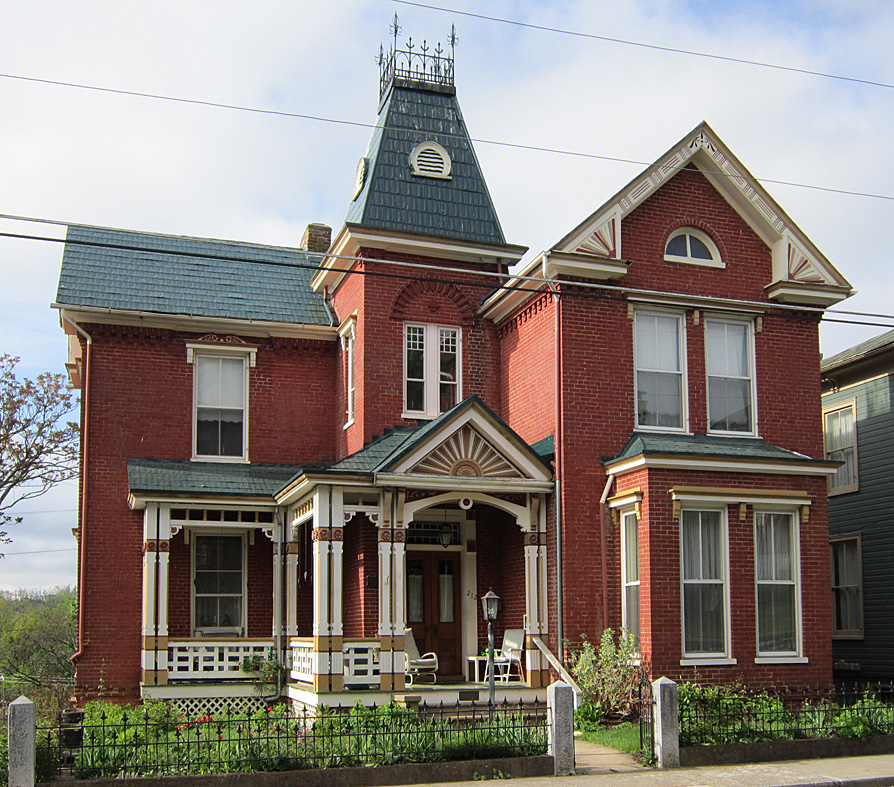 EL01 – Vernacular Victorian
EL01 – Vernacular VictorianThis very nice brick Victorian with a splendid porch is located in Staunton, Virginia. I was attending a wedding in that small town and had a few hours on my hands, so of course I spent them walking through the old section of town and seeing what I could find in the way of old houses.
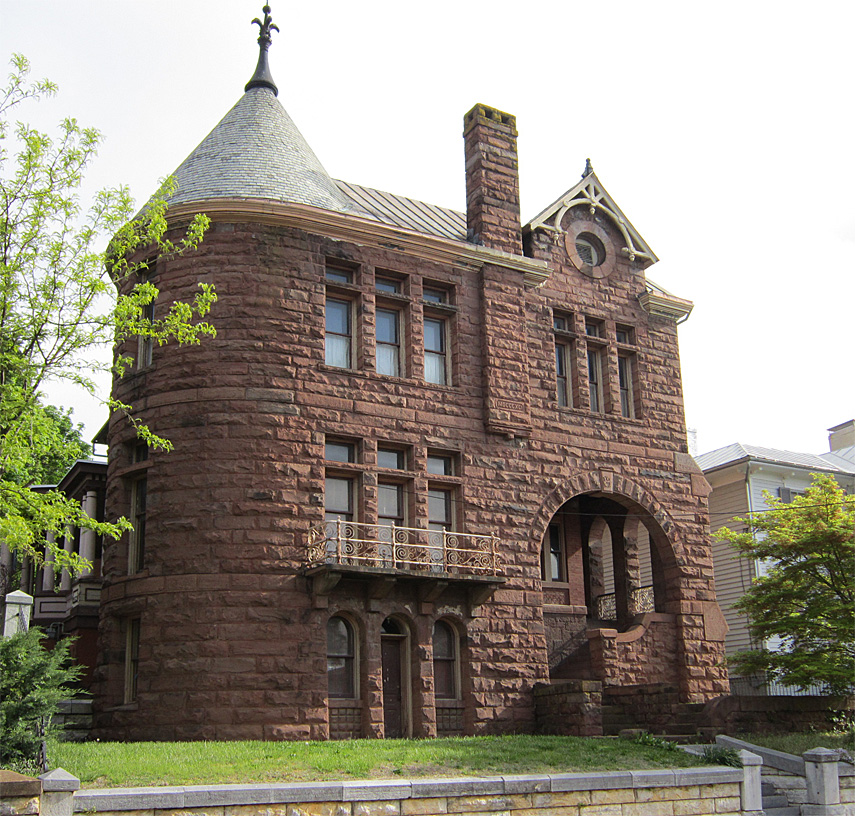 EL02 – Romanesque Revival
EL02 – Romanesque RevivalThis house definitely brought me up short when I first saw it. This is by no means the largest or most impressive Romanesque Revival castle that I've ever seen, but it is certainly the most impressive that I've ever seen in a town as small as Staunton, Virginia. Whoever built this house was a local mover and shaker of no small status, I guarantee.
 EL03 – Second Empire
EL03 – Second EmpireThis is the Hower Mansion in Akron, Ohio. The Hower family made their fortune by milling oats, which may account for the millstone in the front yard. Their house, along with virtually all of its contents, was eventually left to the University of Akron, which has restored it to near-perfect period condition. The house is open to the public, and it is well worth the few dollars they charge for a one-hour guided tour.
 EL04 – Italianate
EL04 – ItalianateThis nice brick Italianate is a next-door neighbor to the Hower house shown above. It is known locally as the Andrew Jackson house, but that doesn't refer to the Andrew Jackson. (The Andrew Jackson who lived in Akron was never President.) Today the house is used as office space by a private foundation.
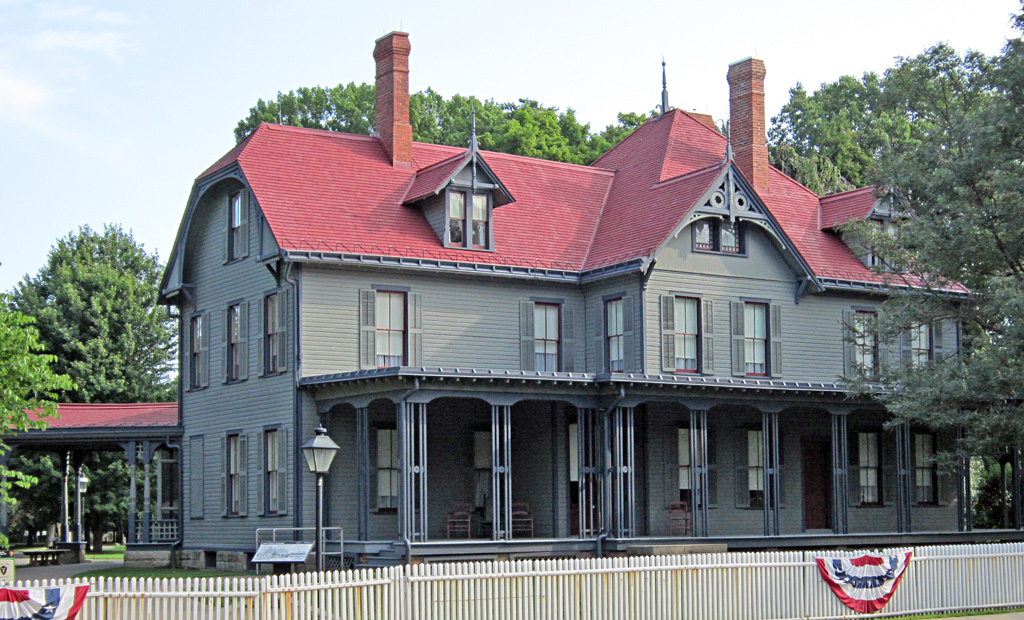 EL05a – Eclectic Victorian
EL05a – Eclectic VictorianThis house is on an estate known as Lawnfield, and was the home of President James Garfield. It is located in Mentor, Ohio, about 25 miles to the east of Cleveland. The front porch is where Garfield ran his famous "porch campaign", because in 1880 it was not considered seemly for a presidential candidate to actively campaign for himself. So, on most days, Garfield would simply come out and sit on his porch and allow the public and journalists to come to him. They would ask questions and he would answer, very like the "town hall" meetings that some politicians hold on television today.
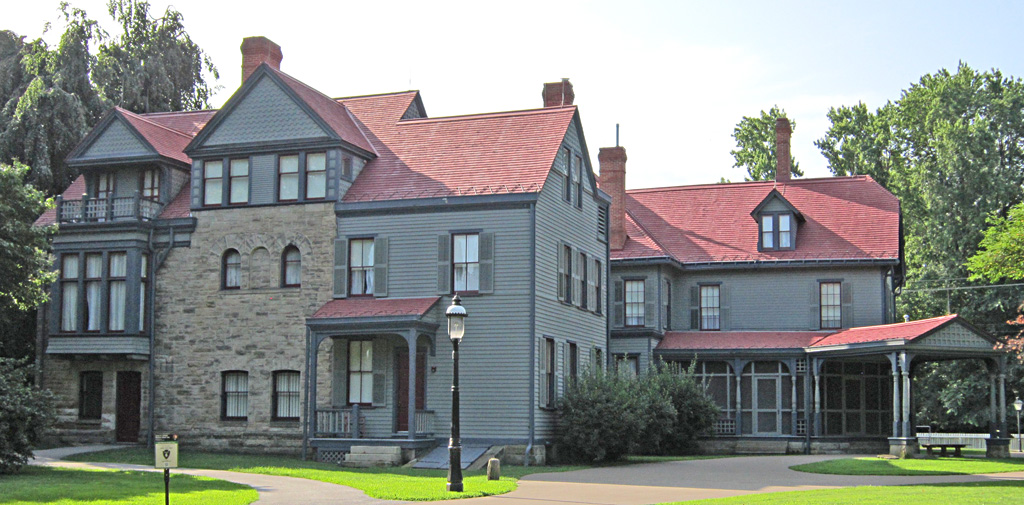 EL05b – Eclectic
EL05b – EclecticThis photo shows the back of the Garfield house. Unfortunately, Garfield is mostly remembered today as the second President to be assassinated. (He was shot by a frustrated political office seeker.) After his death, his wife added the stone wing to the house to hold his presidential papers, which marked the first time that any president had had such a library built for him. His papers are now in Washington, DC.
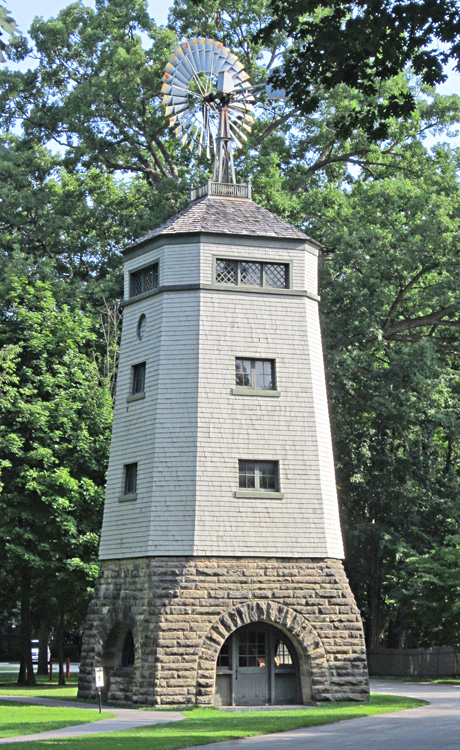 EL05c – Windmill
EL05c – WindmillThis is a windmill located on the Garfield property, perhaps 40 yards from the main house. It was used to pump water into a tank in the attic of the main house, thus allowing the Garfields to have the luxury of running water. The windmill itself is exactly the same as the untold thousands of similar windmills which still dot prairie farms, but it has been cloaked by a marvelous Shingle-Style tower atop a Romanesque style base. (The base is original, but the rest of the tower is an authentic reconstruction completed in 1998.) Garfield's wive, Lucretia, kept accurate records of everything, including the tower's final price of $2196, or about $200,000 in today's currency.
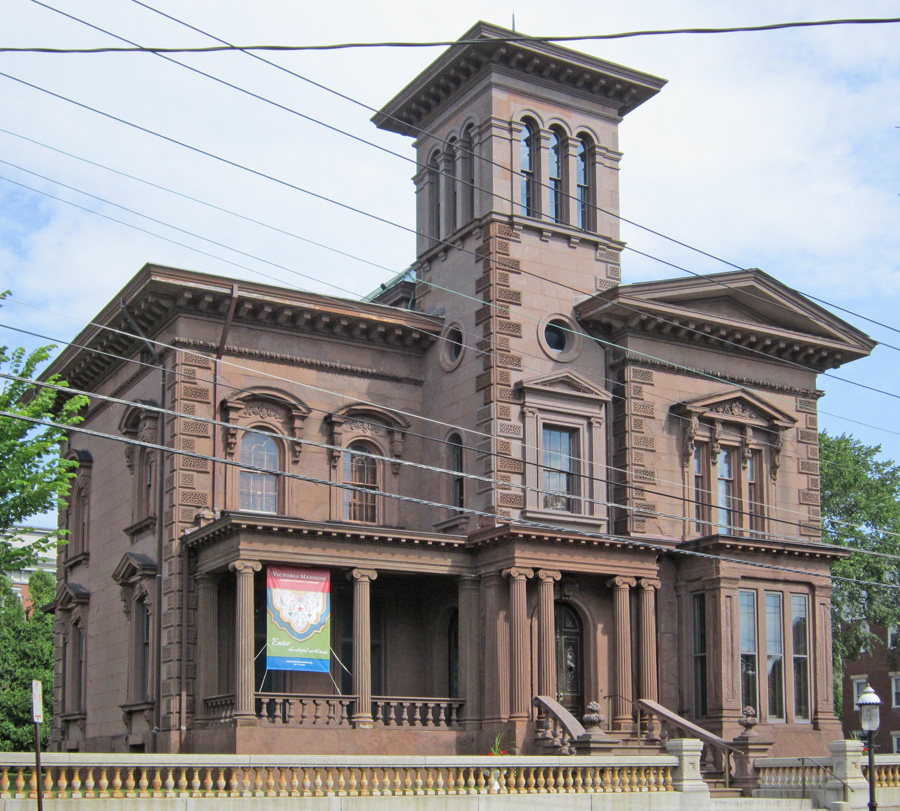 EL06a – Italianate
EL06a – ItalianateThis is the Morse-Libby House in Portland, Maine. It was originally built by Ruggles Morse, a very successful hotelier, as a summer home in 1858. Upon his death in 1893, it was sold along with all of its furnishings to Joseph Libby, a Portland merchant. The Libby family lived in the mansion until 1929, and the house was left vacant during the Great Depression. It was saved from the wrecking ball in 1940 by concerned citizens and has been a private museum ever since. It is one of the finest examples of a nearly untouched brick Italianate in the U.S. (Very little of the house is actually brownstone. Most of it is brick covered by faux stone stucco.)
 EL06b – Italianate
EL06b – ItalianateAn alternate view of the Morse-Libby House. Both views are marred by a hideous web of telephone and electric cables drooping in front of the house, but the views do allow one to see the beautiful elegance of the house's design. The architect of the house (which is also known locally as the Victoria Mansion) was Henry Austin. The interior decorator was Gustave Herter, better known as half of Herter Brothers Furniture, which was the up-scale custom furniture maker of the time.
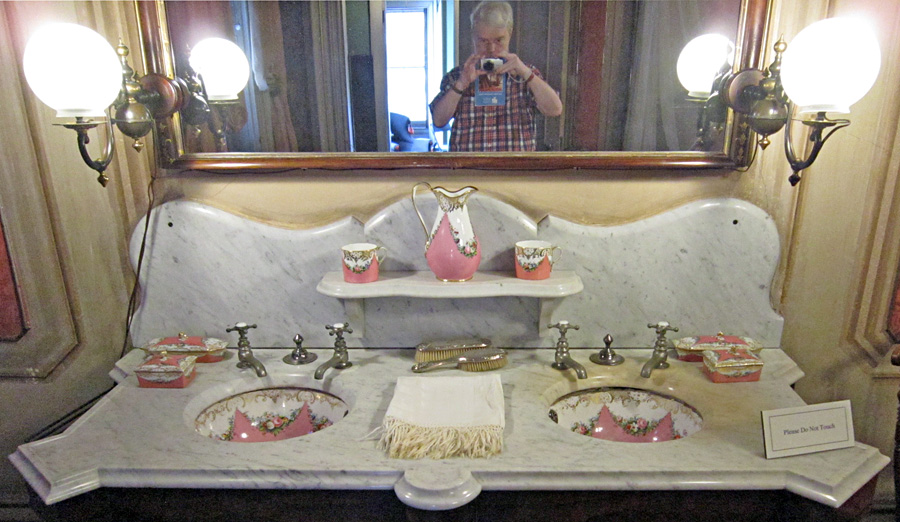 EL07a – Wash Basin
EL07a – Wash BasinI have included this interior photo of a wash basin because it wonderfully demonstrates the opulence of the Morse-Libby House (not to mention that I can be seen in the mirror taking the photo.) What is that, you say? You can see that the sink is very pretty, but you do not see how it can be considered all that opulent? Please look again. Your 21st century eyes just glide right over the fact that the basins have TWO faucets, one for cold -- and one for hot. Running hot water in a house designed in 1858? Wow. Now that is what I call opulent.
 EL07b – Reception Room
EL07b – Reception RoomThe interior of the Morse-Libby House is splendidly decorated in the most all-out Victorian excess imaginable, of course, as demonstrated by this shot of the ceiling and the gasolier in the formal reception room.
 EL08 – Tuscan
EL08 – TuscanI have no idea what the history of this house is, or whether it is still a private residence or not. It is simply a beautiful example of a Tuscan-style Italianate house that I spotted a few blocks from the Morse-Libby House, so I stopped and took this shot of it. The central belvedere (which is what makes it "Tuscan") is somewhat unusual in being octagonal rather than square.
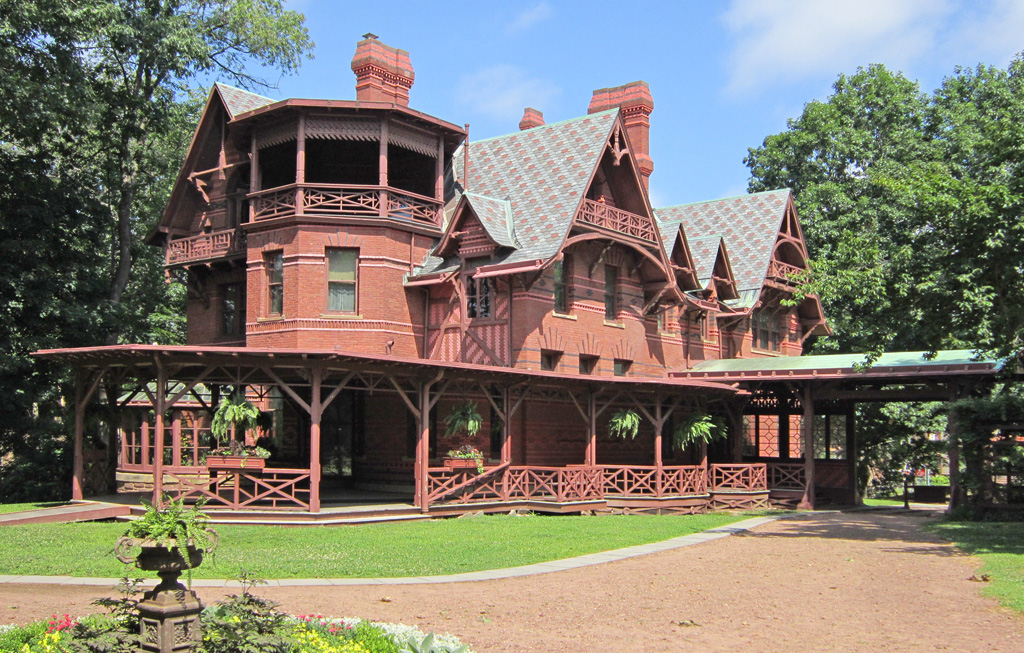 EL09a – Steamboat Gothic
EL09a – Steamboat GothicThis is the famous Mark Twain house in Hartford, Connecticut. Samuel Clemens built this house in 1874, mostly with money from his wife's family, and owned it until 1903. He wrote some of his most famous novels here, including Huckleberry Finn and A Connecticut Yankee In King Arthur's Court. The house itself is in the High Gothic style, but the porch on the octagonal tower, obviously shaped like the wheelhouse on a steamboat, is why I call it Steamboat Gothic.
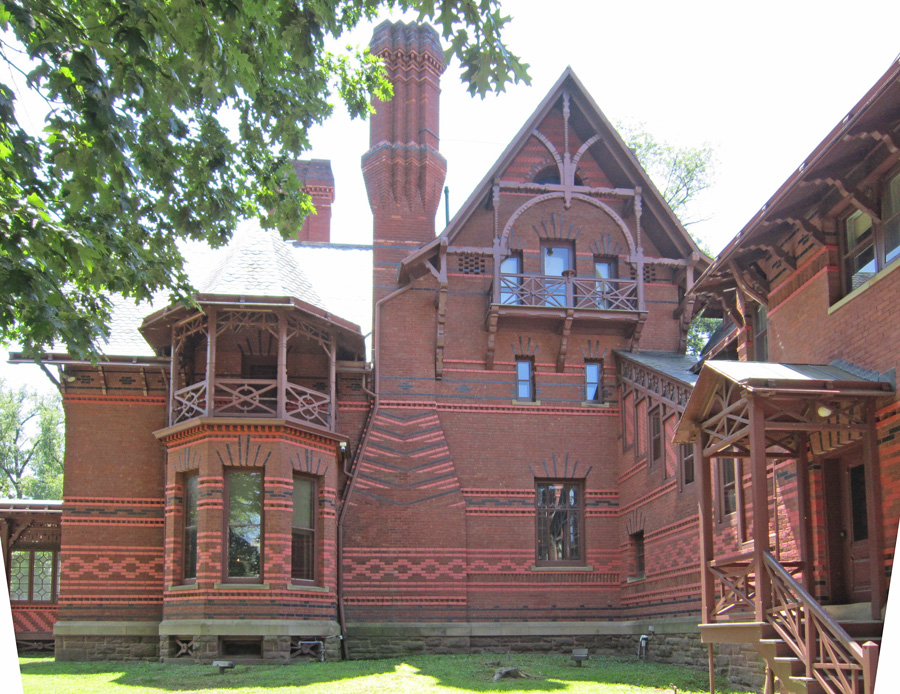 EL09b – Steamboat Gothic
EL09b – Steamboat GothicThis is a view of the back of the Twain house, which shows off more of its wonderful brickwork and spindle decoration.
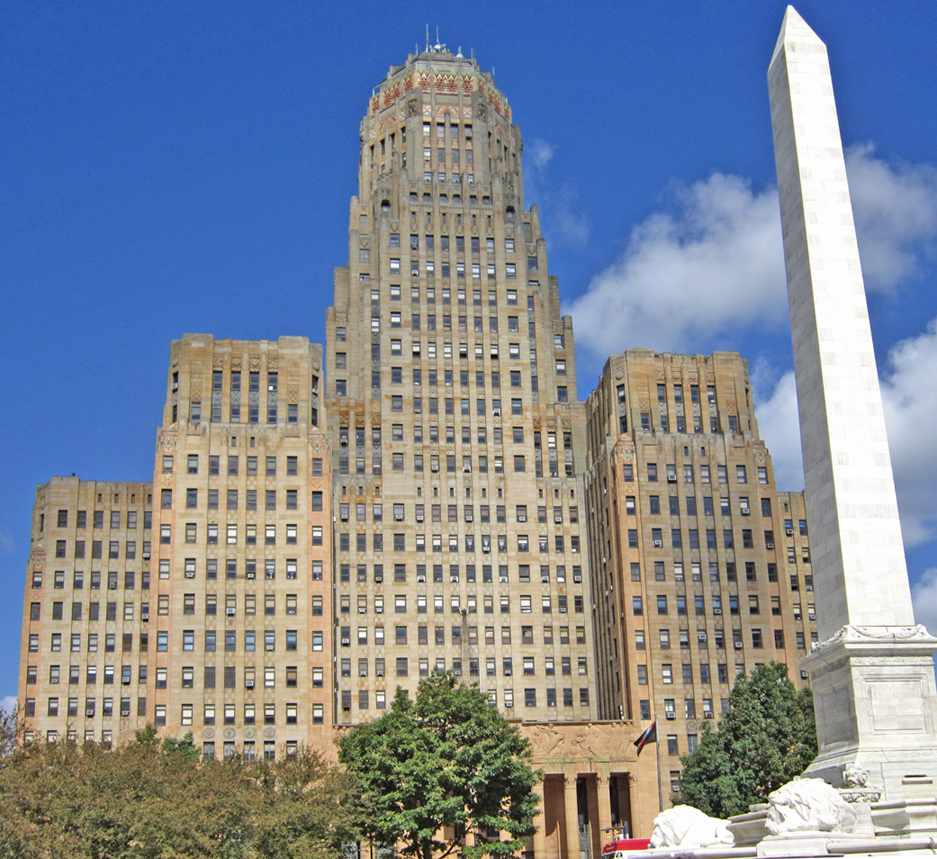 EL10a – Art Deco
EL10a – Art DecoThe term "massive edifice" is applied too liberally sometimes when referring to large buildings, but this edifice (which is the City Hall of Buffalo, NY) fits the description perfectly. Designed by architects George Dietel and John Wade, it was completed in 1931 and is one of the best examples of an Art Deco skyscraper in the nation.
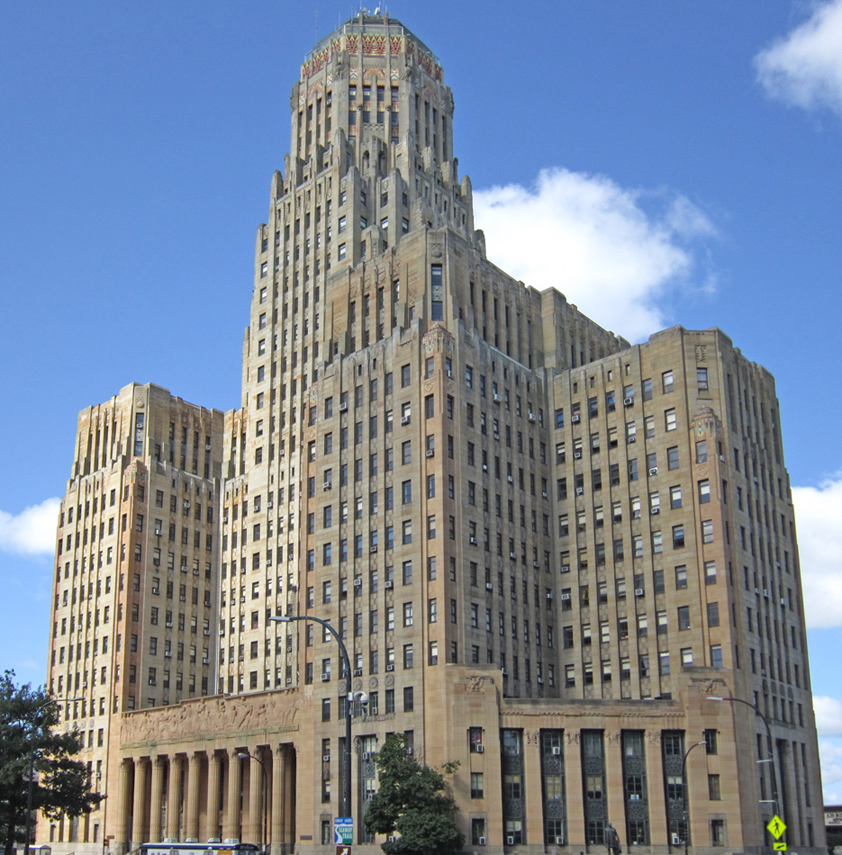 EL10b – Art Deco
EL10b – Art DecoAnother view of the City Hall of Buffalo, NY.
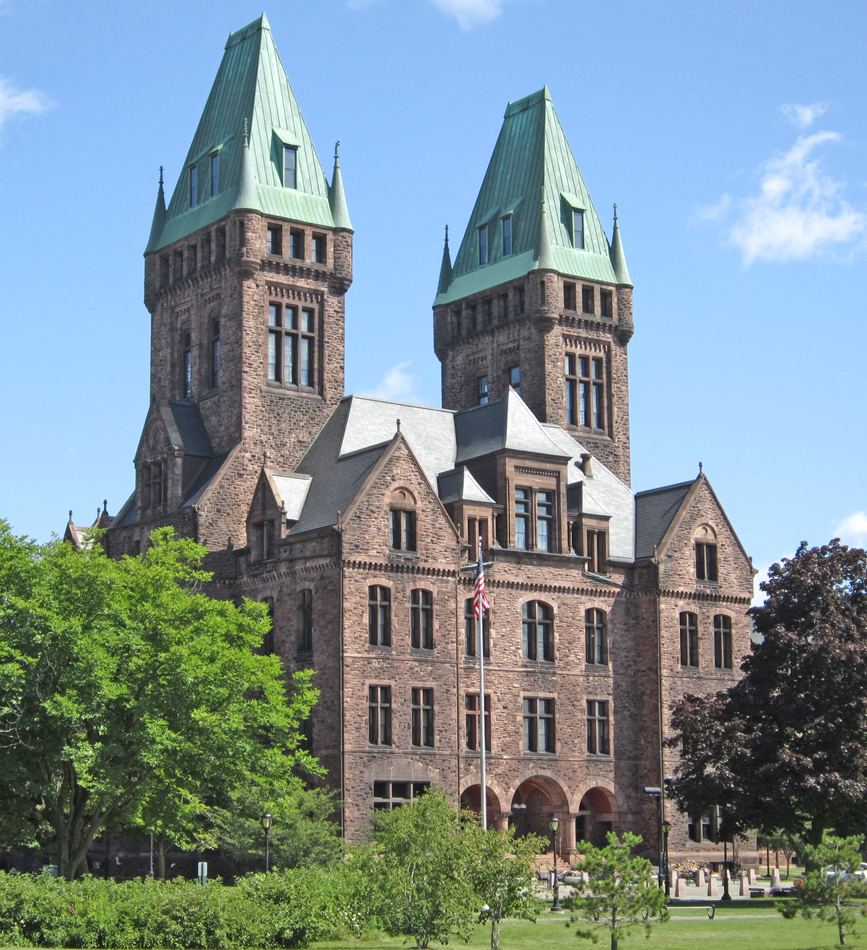 EL10 – Richardson Romanesque
EL10 – Richardson RomanesqueThis building, designed by H. H. Richardson in 1871, was once the central part of the sprawling Buffalo State Asylum for the Insane. Completed in stages, with landscaping by F. L. Olmsted, the complex was not completed until 1896. Today the building is the Richardson Hotel.